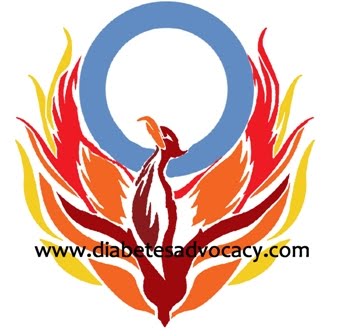
For those of us who have been living in the diabetes world for a year or to, it is very obvious to us that we have our own language and way of doing things. It is common for a mother of a two year old with diabetes who is throwing a tantrum to state in a stern voice, "You had better be high Missy!!" They are used to the odd looks that they receive as people are racing to call Child Protective Services on the parent who seems okay with their toddler being "high".
I came across a tidbit today in the Children with Diabetes Humour section that fit with this. The family was eating in a restaurant that served alcohol. The five year old with diabetes was hungry and impatient. Mom was looking for alcohol swabs to try and clean something off of her fingers. She began chanting, "Where is my alcohol? I want my alcohol!" For some reason people looked at them a little funny. Those of us who live with diabetes see nothing strange about this.
Maybe we are the odd ones? We are the ones that are very nonchalant about the amount of blood splattered on our sheets and clothing. We have learned to buy dark sheets and avoid white at all costs. Personally, I think my son took the blood thing to a whole new level the other day. I sat down in the living room and on the coffee table was his test kit (and of course a pile of dead strips). I was shocked however when I looked at his lancing devise. That puppy looked like it had been murdered!! It was amazing the amount of blood all over it. I swear I thought it had been part of some sort of deadly attack. When I asked my son about it he was very calm. He saw nothing wrong with it. I was positive that if a police officer had walked in at that moment, he would tear my house apart looking for the dead body. I could give any CSI episode a run for its money in blood splatter!
But our oddness seems to be spreading. Our terms that so often sound like something out of a counter-culture...being high, needing alcohol, having a shot, seem to have made their way into main stream media. Last night I was doing some research on an athlete. He is heading to the Olympics but I really knew nothing about him. I found a bit more information last night but my work ended after reading a CTV article. Now CTV is a respected Canadian television network. They discussed the trials and tribulations of this young man...not only is he obviously a little off his rocker for choosing a sport that requires him to ski for FIFTY KILOMETERS (I can't do 50 meters!) but he is doing it after numerous sports related injuries and surgeries as well as living with Type 1 diabetes. He is truly amazing but the best, best, best part of the article for me was when they discussed life before his insulin pump. You see in those days he was required to take up to 10 HITS of insulin a day!! I have heard it called a lot of things but even for me, "hits" of insulin takes me directly to the drug world and I have to laugh.
I honestly don't care if they want to call it hits of insulin. I don't care if people think I am crazy when I ask if my kid is high and I am not talking about drugs. These are things that we live with and maybe using these words that have become so popular in reference to other things will just make this disease a bit more memorable for people and make the ask more questions.
Off to check and see how many "hits" my son took today....

